For this crop, the right landing dates are very important. If the planting of garlic in the fall before winter is carried out too early, it will germinate, and if done too late, it will not have time to take root before frost. Untimely planting can lead not only to a significant loss of crop. You can not get it at all.
Material Content:
The best varieties of winter garlic
Varieties of winter garlic differ in many ways: the size of the heads, the ripening dates, the severity, the ability to store. But they are all divided into 2 main groups: shooting and non-shooting. The first form an arrow on which grow air balloons - kids. If they are sown, then you can get one-tooth - a great material for autumn planting. The second group of varieties does not have such an arrow.

Shooting varieties
Alekseevsky.
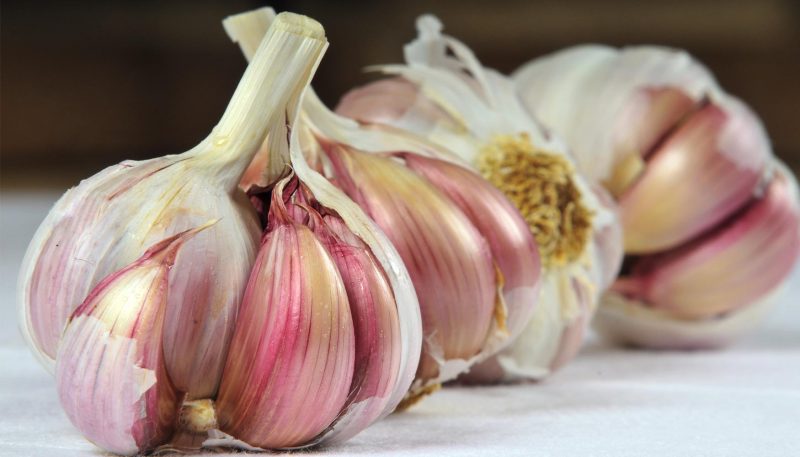
A variety that gives a very large head - its weight is about 180 g, individual champions grow to 240 g. There are 5 cloves in the head. The plant is powerful, along with the arrow can reach a height of 1.5 m. It is well stored and has a rich pungent taste. The color of the covering scales is gray. The variety is resistant to fusarium.
Gulliver.

The head is large, average weight is 120 g, the record is 250. There are up to 12 teeth in the head. Covering scales are gray, the taste is sharp. This type of garlic is also suitable for spring planting. The variety is medium late.
Belorussian.
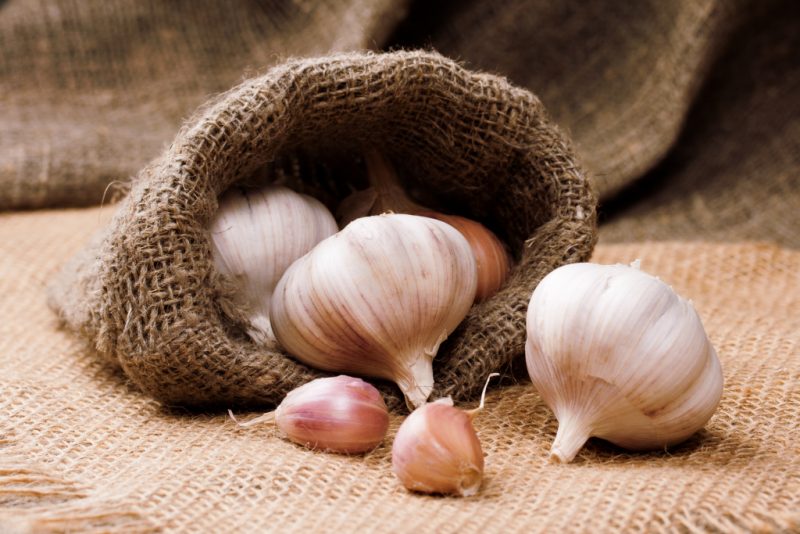
The weight of the heads is up to 80 g. The number of teeth in it is up to 8. The scales are white with a purple tint. The taste is spicy. Early ripening grade.
Lyubasha.
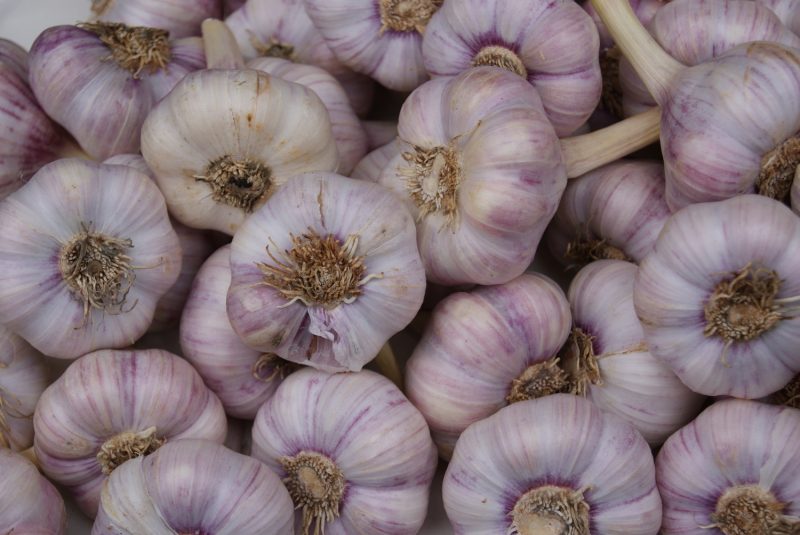
The head is large, weighing up to 120 g, covered with light scales with purple streaks. The taste is sharp, the number of teeth is up to 7. The ripening period is medium.
Nazus.

A variety for regions with frosty winters. Head with an average weight of 65 g, teeth in it up to 6, scales reddish-white, the taste is slightly sharp. Mid-season grade.
Non-Shooting Varieties
Novosibirsk.

The average mass of the head is 22 g, it is made of 6 teeth. Covering scales are pale pink, the taste is semi-sharp. The variety is mid-season.
Moscow Region.
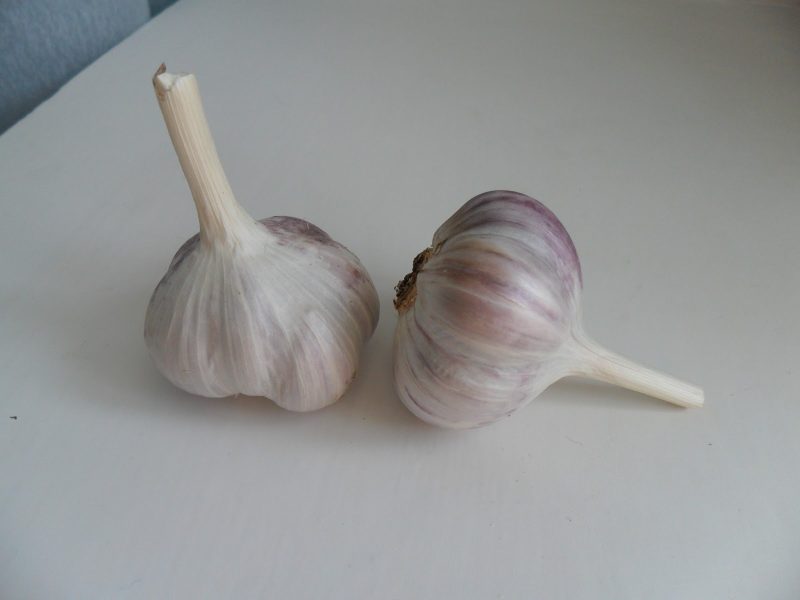
A variety with a spicy taste. Head weighing up to 60 g, consists of 7 teeth. Covering scales are gray with purple stripes. Ripening period is mid-ripening.
Then plant garlic in the winter?
Potatoes and all types of onions are bad predecessors for garlic, because they have the same diseases with it, the causative agents of which can accumulate in the soil. Root crops and various nightshade crops are not suitable as precursors.

Best of all, garlic succeeds after cucumbers and other representatives of pumpkin, cabbage (especially early white cabbage), legumes, and various cereals.
Landing time
They depend on the region of cultivation. The following rule will help you figure out when to plant garlic in the winter: it takes three weeks to a month to root the garlic. It falls on the frost-free period, and therefore, garlic should be planted 20-30 days before the onset of frost.
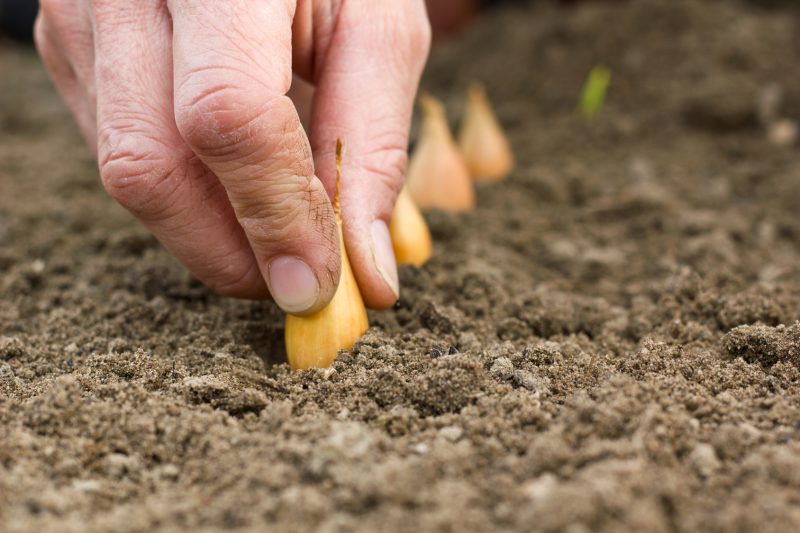
Early autumn frosts do not count. If the teeth are planted earlier, they will not only take root, but will also produce sprouts that will die in winter. A little sprout will have little strength on the new sprout, and, perhaps, they will not be at all. Therefore, you won’t have to rely on a plentiful harvest. If the planting is too late, good roots will not have time to grow, in the spring a tooth will have to spend time building them up, shoots may be late.
Preparing planting material
For planting, only large teeth from healthy bulbs are suitable.
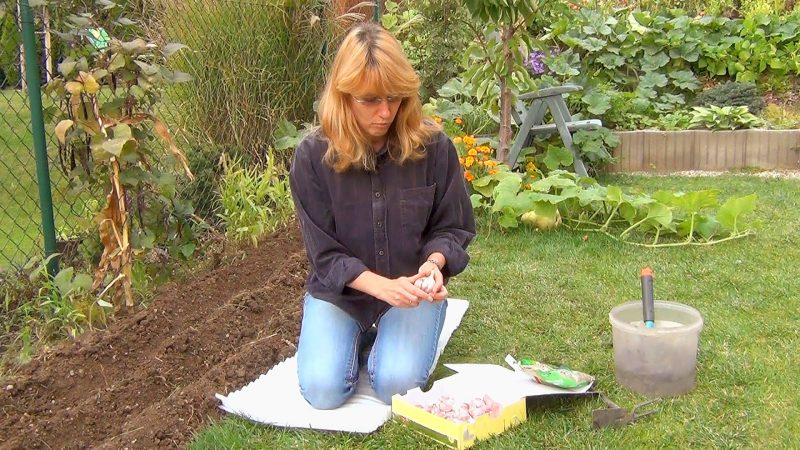
Teeth preparation:
- we disassemble the bulb into the cloves, not forgetting to remove parts of the bottom; in non-shooting varieties for planting, only the outer row is taken away, do not plant double cloves;
- we reject all injured and sick;
- we carry out the disinfection of planting material in the Maxim preparation according to the instructions or in a solution of copper sulfate prepared from 10 l of water and a teaspoon of the preparation.
You need to plant teeth immediately after disinfection.
Soil requirements

The soil on the garlic bed should meet the following requirements:
- to be fertile, with a high content of humus - on skinny soils large heads cannot be obtained;
- be light enough in composition, ideally, it is black soil or sandy loam well seasoned with humus; A good crop is also obtained on loams, but they will often have to be loosened;
- good air permeability;
- have a neutral reaction; if the soil is acidic, it must be limestone in advance;
- there should not be stagnation of water on the bed, its garlic does not tolerate, therefore, this crop should not be planted in a lowland; the only option on too moist soils is high beds.
When choosing a place to land, you need to pay attention to its illumination. It should be maximum, in the shade of garlic will please a green feather, but not full heads.
Fertilizer in the preparation of the beds
A garlic bed must be prepared at least 2 weeks in advance so that the soil settles and compacts. In too loose soil, the teeth are strongly drawn into the depths, seedlings will appear later and will be uneven.
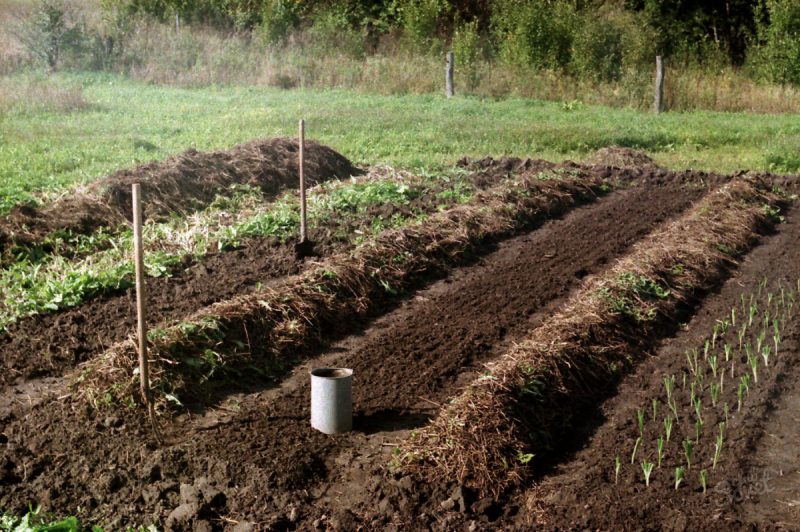
What fertilize the beds for garlic? For each square. m contribute:
- up to 10 kg of humus or well-rotted compost;
- a glass of wood ash;
- 1 tbsp. a spoonful of superphosphate;
- 2 tbsp. tablespoons of potassium sulfate.
Nitrogen fertilizers are applied at the first spring loosening. In the fall, the soil is dug up to a depth of 25 cm. You can simply loosen it well with a pitchfork, choosing weed roots.
Fresh garbage should not be added under the garlic - the heads will be loose and will be poorly stored.
Planting winter garlic
It is better to place row from row on a bed at a distance of 25 cm. In a row, teeth are planted every 10 cm, large - less often, small - more often. The easiest way is to take a thick wand and make recesses at the right distance at the same level.

To what depth is garlic planted? It depends on how frosty winters are and how much snow falls. Garlic, planted to a depth of about 5 cm, sprouts faster, but it can freeze in a snowy and frosty winter. In harsh climates, it is better to choose a planting depth of about 15 cm. The teeth are placed in the holes bottom-down, without pressing them, otherwise it will be difficult for them to let the roots go. Wells are covered with humus.
Experienced gardeners know that dry wintering is preferable for garlic. In our unstable climate, we are not immune to rain even in January. To protect the planting from excessive moisture and at the same time from severe freezing, you can mulch the soil with a layer of humus or leaves, and cover the bed with either roofing material or a film. But this is only if in the spring it is possible to remove the shelter before emergence. Otherwise, you will have to limit yourself to conventional mulching with a layer of 5 cm. In the spring, the mulch material is removed.
Care Features
Growing garlic in the open field is a simple task, but it requires consistency in the application of all agricultural techniques. In spring, garlic rises very quickly. As soon as the first leaves appeared, they carry out loosening of the earth to destroy the soil crust. At this time, plants are especially in need of nitrogen. The roots in cold soil still function poorly, and the leaf apparatus grows rapidly. This imbalance often causes the tips of the leaves to dry. To avoid this, we feed the garlic with any nitrogen fertilizer, but always in liquid form: Art. urea spoon per 10 liters of water, per square meter. m pour 1/3 of a bucket. It is good to add humate to the solution, it contributes to the fastest growth of roots.

In the future, 2-3 additional feeding will be required with a frequency of 2 weeks:
- in the phase of 3-4 leaves - complete mineral fertilizer with the addition of urea - according to Art. spoon per 10 liters of water, consumption per 3 square meters. m;
- complete mineral fertilizer - Art. spoon per 10 liters of water, consumption per 2 square meters. m;
- superphosphate - 1 tbsp. spoon, potassium sulfate - 1 tbsp. spoon per 10 liters of water, consumption per 2 sq.m.
Top dressing is carried out after watering. Garlic loves moisture, so it is watered regularly, but only in the first half of the growing season.
20 days before harvesting, irrigation of garlic is stopped.
What else needs to be done to get a good harvest?
- Remove the arrows on the arrow varieties in time - they should not grow more than 5 cm.
- Keep the soil loose and free of weeds.
- Remove heads in time
Subject to the timing of planting and all the rules of agricultural technology, varietal garlic will give an excellent harvest.












